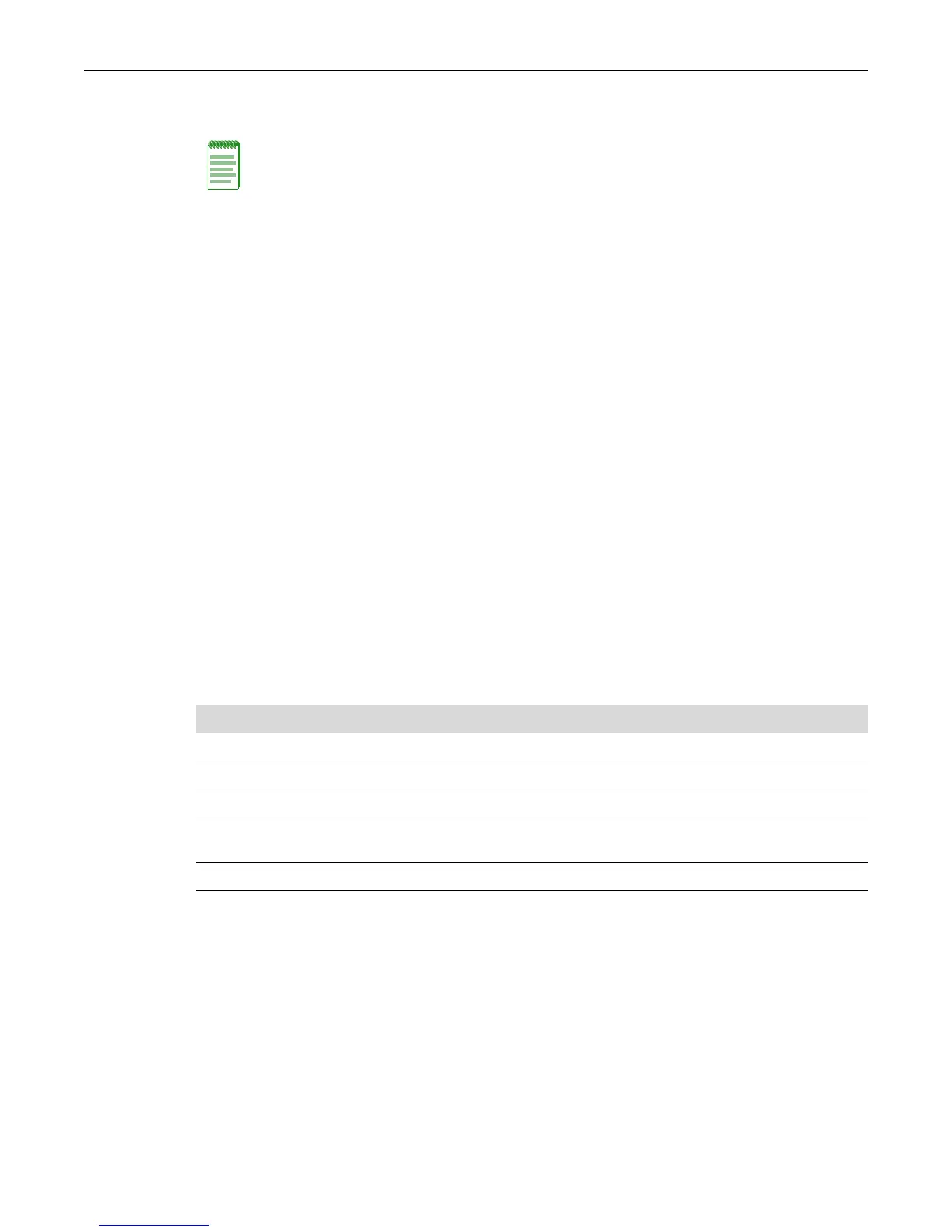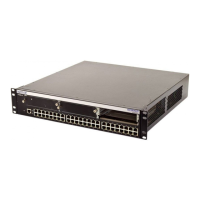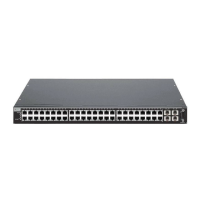Configuring Policy Class of Service (CoS)
15-18 Policy Classification Configuration
Configuring Policy Class of Service (CoS)
The Enterasys C3 supports Class of Service (CoS), which allows you to assign mission-critical data
to a higher priority through the device by delaying less critical traffic during periods of
congestion. The higher priority traffic going through the device is serviced first (before lower
priority traffic). The Class of Service capability of the device is implemented by a priority
queueing mechanism. Class of Service is based on the IEEE 802.1D (802.1p) standard specification,
and allows you to define eight priorities (0-7, with 7 granted highest priority) and up to 8 transmit
queues (0-7) for each port.
By default, policy-based CoS is disabled on the device, and default or user-assigned port-based
802.1D (802.1p) settings are used to determine traffic prioritization. When policy-based CoS is
enabled, the default and user-assigned policy-based settings will override port-based settings
described in Chapter 16, Port Priority Configuration.
Class of Service functionality can also be used to control broadcast, unknown unicast, and/or
multicast flooding. This feature prevents configured ports from being disrupted by a traffic storm
by rate-limiting specific types of packets through those ports. Refer to “About CoS-Based Flood
Control” on page 15-20 for more information.
About Policy-Based CoS Configurations
Once enabled using the set cos state command, you can add to the policy-based CoS function by
defining new port groupings, and assigning inbound rate limiters. The process for user-defined
CoS configuration involves the following steps and associated commands listed in Procedure 15-1.
An example follows the procedure.
Example
This example creates different inbound rate limiters for two port groups and then assigns them to
traffic with a CoS setting of 0.
1. Configure two port groups, one for user ports and one for uplink ports and assign ports to the
groups. Port group 1.0 will represent user ports, group 2.0 will represent uplink ports.
C3(su)->set cos port-config irl 1.0 name Users ports ge.1.1-46
C3(su)->set cos port-config irl 2.0 name Uplink ports ge.1.47-48
C3(su)->show cos port-config
Inbound Rate Limiting Port Configuration Entries
Note: It is recommended that you use Enterasys Networks NetSight Policy Manager as an
alternative to CLI for configuring policy-based CoS on the switches.
Procedure 15-1 User-Defined CoS Configuration
Step Task Command(s)
1. Enable CoS set cos state enable
2. Create CoS IRL port groups set cos port-config irl
3. Define physical rate limiters for groups set cos port-resource irl
4. Create virtual reference for the IRL resource
(physical reference) for each port group
set cos reference
5. Add IRL reference to CoS settings table set cos settings

